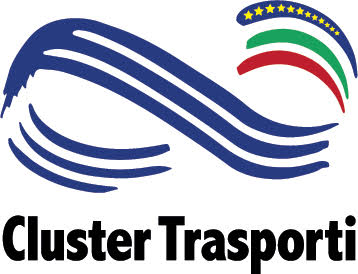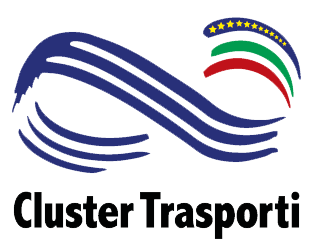Cluster Trasporti, comments on passenger name record (PNR) 2021-2027

Published 23 March 2021
Cluster Trasporti Italia 2020 has participated to the public consultations held by the Ministry of University and Research (MUR) for the definition of the National Research Program 2021-2027 (PNR). The Scientific Council, in a letter addressed to the Ministry, proposes additions and comments to the PNR, with specific reference to paragraph 5.1 Sustainable Mobility.
Freight transport
The importance of the transport of goods is – they explain – not very evident in the current text of the PNR. The recent pandemic has shown that the transport of people can be stopped, and on the contrary, the transport of goods is essential for the life of society. The problems of resilience and security of the transport system have been made topical by the COVID-19 pandemic. Therefore, studies seem necessary to reconcile the efficiency of the transport system and its resilience. As far as safety is concerned, especially with automation means, man-machine interaction should be appropriately highlighted in the PNR. The relationship between the transport system and the economic impact on society should also be better addressed. Focus of training can then be improved, to be dealt with at all levels, from ‘vocational’ to higher education, and the possible interactions of this last one with research conducted in companies.
Product innovation
The industrial dimension of innovations in the field of mobility should always take into account the fact that most of the turnover in the field of transport comes from manufacturing companies that carry out product innovation, starting with the use of materials. It is therefore necessary to emphasize that innovation relating to ‘soft’ themes (Artificial Intelligence, Mobility as a Service, Big Data Analytics, C-ITS, etc.) must – from an industrial point of view – be combined with ‘hard’ themes relating to products (complete vehicles or components). Italian companies are engaged in the development of the key issues listed in the PNR but cannot fail to allocate funds for product innovation, starting with the use of advanced materials, of component equipped with sensors, and relative implications on circular economy and safety (non-specific issues touched upon or referred to generically in the current version of the PNR). The Life Cycle Assessment will assume considerable importance in the near future, for the comparison between different technologies (comparison between vehicles with low environmental impact). Finally, the geopolitical aspects involved in the innovations should not be underestimated: an example is the use of rare earths for the construction of magnets or the extensive use of accumulators not produced in Europe. In practice – it’s underlined – the PNR lacks some items in the existing articulations, in particular a complete articulation concerning the materials. The materials, in paragraph 5.1, are mentioned only with reference to “the flow of materials” and the accumulation of energy! We remind you that the innovations on materials and components refer to products and not only to manufacturing.
It is therefore proposed to re-discuss and insert the following strategic issues:
. Demand for national and international, multimodal and sustainable freight mobility: policies for the development of the country as an international hub for Europe’s international trade;
. Analysis of the demand for delivering in metropolitan cities driven by e-commerce;
. Digital twins of transport infrastructures and networks;
. Infrastructures and energy supply systems for means of transport;
. Remote piloting solutions in high traffic areas;
. Use of drones for the transport of goods;
. Integration of tourist mobility in MAAS systems;
. Development of prototypes and pilot systems for autonomous and green transport;
. Solutions that make it possible to improve the planning of waste collection, its management and disposal in the various territorial contexts;
. Last mile freight planning and optimization tools;
. Decision support, optimization and prediction systems for automated transport systems and networks;
. Autonomous vehicle fleet management systems and service optimization.
Sustainable mobility
In the context of sustainable mobility (Article 4, green networks and vehicles), energy efficiency and the development of systems to reduce the environmental impact of fossil fuel systems should be included, at least for the large-scale naval sector where the use alternative fuels will take longer to penetrate. The point is taken up in Article 5 but does not seem to be clearly expressed. With specific reference to renewable fuels, we recommend maximum adherence to European terminology (2Zero). The renewable fuels themselves are divided into advanced biofuels (from biomass, excluding those from crops intended for the production of food and feed) renewable e-fuels and renewable non-hydrocarbon fuels. Perhaps it would be appropriate to intervene in the implemented text. It is proposed to insert a new articulation “Wellbeing in transport”.
At present, after hearing some members of Cluster Trasporti, it would be useful to include a new articulation centered on hard topics and on product innovation through advanced materials.
Research priorities on advanced materials for sustainable mobility:
. Lightening technologies for road, rail and waterborne vehicles;
. Construction of electric motors;
. Architectures of new components for road, rail and waterway vehicles;
. Sensing of vehicle components on range, railways and waterways;
. Life cycle assessment for comparison between different technologies: harmonization of LCI databases; integration of the current principles and methods for LCA / CE (Circular Economy) in the tools for the development of technologies and means of transport as well as for the planning of mobility; LCSA (Life Cycle Sustainability Assessment) tools and methods for monitoring and verifying real use cases;
. New architectures and powertrains for road, rail and waterway vehicles.


